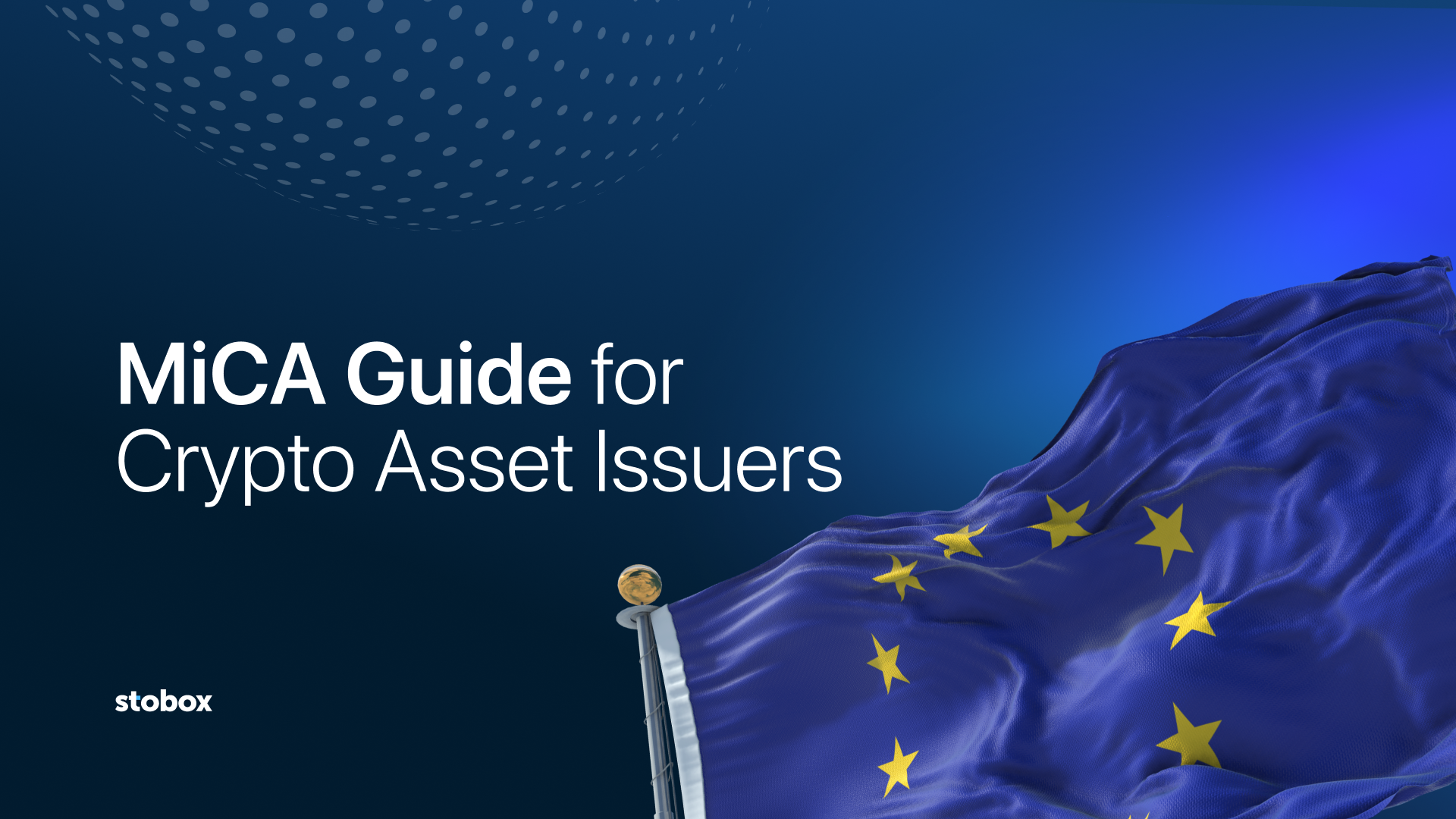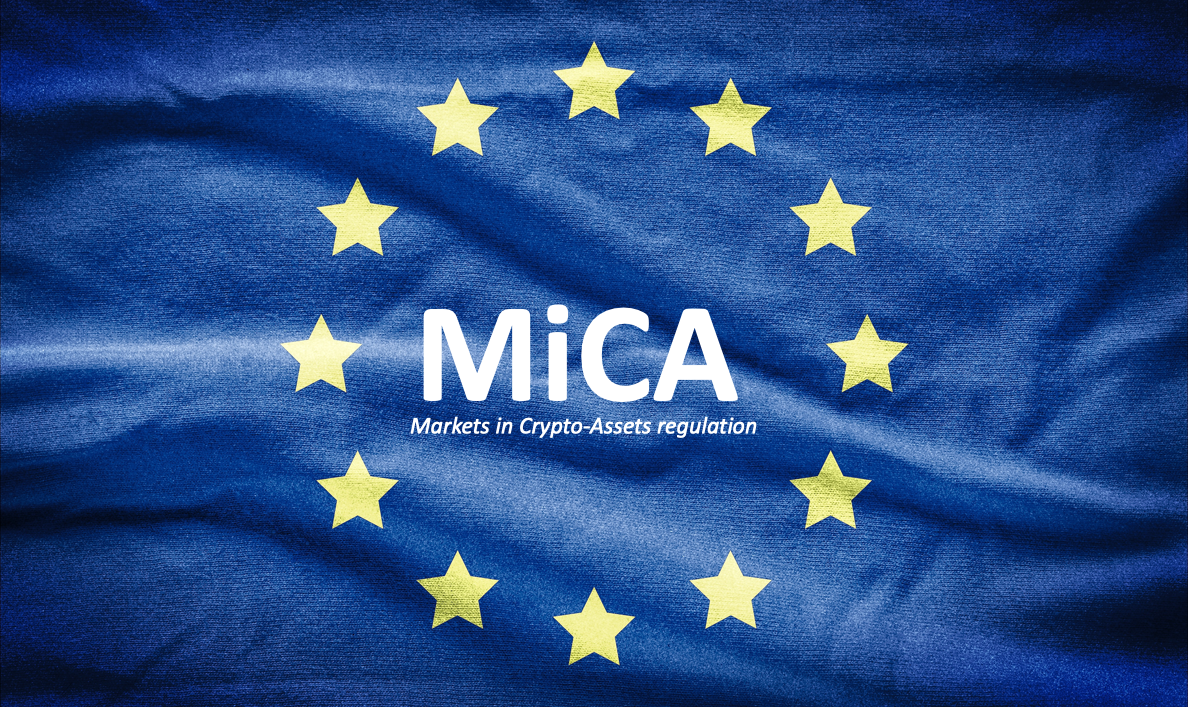MiCA Guide for Crypto Assets Issuers
Uncover MICA impacts on digital asset issuance for businesses. Learn compliance, strategies, and CASP requirements in our EU regulation guide.

For the past year, news headlines have been full of information about the adoption of MICA, meaning European Markets in Crypto-Assets Regulation. However, very little attention has been paid to the perspective of non-crypto, maybe even non-technology companies for whom digital assets enhance their primary business. What will change for those who want to issue their digital crypto assets in the future? It is for such businesses that we have created this guide.
What is MICA?
MICA stands for Markets in Crypto-Assets Regulation. This is a set of rules aimed at unifying the regulation of the crypto sphere in the EU. They are designed to make the crypto market more transparent and secure, as well as to promote its development in the EU. The legislature has already voted in favor of these rules in June 2023. So now the EU countries have time to implement these changes in their legislation by June-December 2024.

Why is MICA important?
These regulations introduce new rules for all EU investors, issuers of digital crypto assets that are from the EU or want to target EU investors, and all crypto asset service providers that work with the latter audiences. This applies to all current and future crypto assets.
If these rules are not followed, issuers may face a large fine. Some cases set it at a minimum of 5 million euros, as well as from 3 to 12.5% of the total annual turnover, depending on the severity of the violations.
To make sure that your crypto asset is MICA compliant, you have 4 to 10 months, depending on the specific EU country through which you will be operating in the future.
Is my crypto asset subject to MICA?
To understand whether your crypto asset is subject to MICA, two criteria must be met simultaneously. The first criterion is regional: the asset is either issued by a European company or offered to EU investors. The second criterion is that the asset falls within the required type according to the classification.
For better understanding, we suggest dividing assets into the following categories:
Assets that are directly regulated by MICA:
- E-Money Tokens (EMT). These include stablecoins with their value attached to the cost of only one fiat currency, such as USDC. Like the next type of tokens, EMTs are quite strictly regulated.
- Asset-referenced Token (ART). These are tokens with the value attached to a Real-World Asset or to several assets at the same time. This reference can be to securities, commodities, or real estate. This also includes stablecoins that are pegged to several fiat currencies at the same time, such as Libra.
- Other tokens. This primarily refers to utility tokens, but it also includes other potential types of tokens. If your asset falls into this class, you will have less stringent requirements from regulators.
Assets outside of MICA's scope:
- Crypto assets that are considered securities, regardless of the specific class of financial instrument. That is all security tokens. They are regulated by MiFID II.
- Assets that constitute other types of common financial instruments, such as insurance products, pension products, social security schemes, etc. They are regulated by different relevant legislation.
- Assets that are "unique and not fungible, including digital art and collectibles". This applies to the vast majority of Non-Fungible Tokens (NFTs), as well as soulbound tokens (SBTs), such as SBIDs from Stobox.
- Crypto assets that are fully decentralized, including Bitcoin. However, it is worth noting that companies associated with such assets still face significant risks of being subject to MICA as service providers.

What does MICA mean for me as a token issuer?
Each type of asset has its own conditions, but there are a few universal requirements that must be met by all:
- Each crypto asset must have a responsible legal entity. This entity is almost always the issuer. However, if there is no specific issuer, all obligations in relation to the crypto asset are assigned to the trading platform that offers it.
- Each responsible legal entity must have a representative office in the EU, including an office and at least one appointed director who is a resident of the EU.
- Each crypto asset must have a comprehensive whitepaper.
- The issuer must notify the local regulator at least 20 days before the start of trading.
- Every significant change in the business, and, accordingly, in the whitepaper, is also required to be reported to the regulator. This includes, for example, changes in the business model or tokenization structure.
- Old whitepaper versions should be available on the website for ten years, marked as invalid with a warning and a link to the latest version.
- The issuer must conduct marketing communication in a manner that is fair, clear, not misleading, and consistent with the whitepaper. However, the most important requirement is that these conditions must be identifiable to local regulators. In other words, the issuer must be able to provide evidence that its marketing communication meets these standards.
- Compliance with other relevant legislation, including requirements for appropriate KYC/AML measures, compliance with the GDPR, etc.

Restrictions on the issuance process
MICA also introduces certain restrictions on the issuance process itself. In addition to the fact that the issuer cannot remain anonymous, it is now forbidden to issue fully algorithmic stablecoins in order to avoid past mistakes.
Also, if a liquidity pool is created when issuing crypto assets, it must be held by a third party (custody). In fact, this is a direct prohibition on non-custodial treasuries, as well as Initial Exchange Offerings (IEO) or Initial Dex OfferingsThe section (IDO).
From now on, all issuers of asset-backed tokens will have to comply with prudential requirements and hold reserve assets in custody, segregated from their own funds and free of debt or other financial liabilities. In particular, issuers of stablecoins must maintain a 1:1 ratio of crypto assets to real assets and ensure high liquidity for at least 80% of these funds.
Requirements for the whitepaper
MICA establishes a list of requirements for the content of the whitepaper. English or an official EU language. Comprehensive whitepapers must contain:
- detailed information about the crypto asset;
- detailed information about the issuer. And if the offer or admission to trading is made by other legal entities, then information about them as well;
- the terms of the offer to the public or its admission to trading;
- The rights and obligations attached to the crypto-asset;
- Description of the underlying technology;
- Description of the climate and other environment-related impact of the consensus mechanism used to issue the crypto-asset.
- The section containing the risks. Specifically, each whitepaper must contain that the crypto-asset may lose its value in part or in full, may not always be transferable, may not be liquid,
- A mention of whether the crypto asset is covered by investor compensation schemes or deposit guarantee schemes.
- A mention that the whitepaper is not approved by any competent authority in any Member State of the European Union and the issuer of the crypto-asset is solely responsible for the content of this crypto-asset white paper.
Risks
These regulations may create problems for certain issuers directly or indirectly.
Classification as a CASP
According to MICA regulations, almost all ARTs and EMTs issuers will be considered Crypto Asset Service Providers (CASPs). CASP means the need to obtain a license, open a local office in one of the EU countries with at least one director who is a resident of the EU, as well as initial capital requirements from 50 to 250 thousand euros, or up to 3% of total assets.
Higher probability of classification as a security
Lawyers note that the wording of the MICA regulations is such that, when implemented in national legislation, in some countries, the risk of classifying many asset-backed tokens as securities will increase, which will be accompanied by a higher level of requirements for issuers and service providers and higher costs for such crypto projects.
Uncertainty of the DeFi sector
MICA does not mention many of the usual processes in the Web3 industry: DeFi, staking, and lending. None of this is covered by the current version of MICA. These things, as well as many future innovations, remain in the field of regulatory uncertainty and will be based on the legislation of individual advanced countries.
Turbulence for fully decentralized assets
Although MICA notes that fully decentralized assets are outside of the scope, unfortunately, no clear line has been drawn between which crypto asset is fully decentralized and which is not. This means that such projects should be prepared for compliance.
Transformation and disappearance of IEOs, IDOs, and unregistered DAOs
MICA clearly states that each crypto asset must have a responsible legal entity, and therefore some forms of DAOs that existed as unregistered partnerships must change their status.
Also, since non-custodial treasuries are no longer allowed, new IEOs/IDOs should not be expected. Existing projects that do not cease operations within 4-10 months will face delisting or even a fine.
Do I need a CASP?
To be classified as a CASP, it is sufficient to engage in only one of the following activities:
- Operating a trading platform for crypto assets;
- Providing custody and administration of crypto-assets on behalf of clients;
- Exchanging crypto-assets for funds or other crypto-assets;
- Executing the orders for crypto-assets on behalf of clients;
- Receiving and transmitting orders for crypto-assets on behalf of clients;
- Placing of crypto-assets;
- Providing transfer services for crypto-assets on behalf of clients;
- Providing advice on crypto-assets and/or portfolio management.
To understand these points in more detail, it is enough to familiarize yourself with the advisory packages made by the European Securities and Markets Authority (ESMA).


